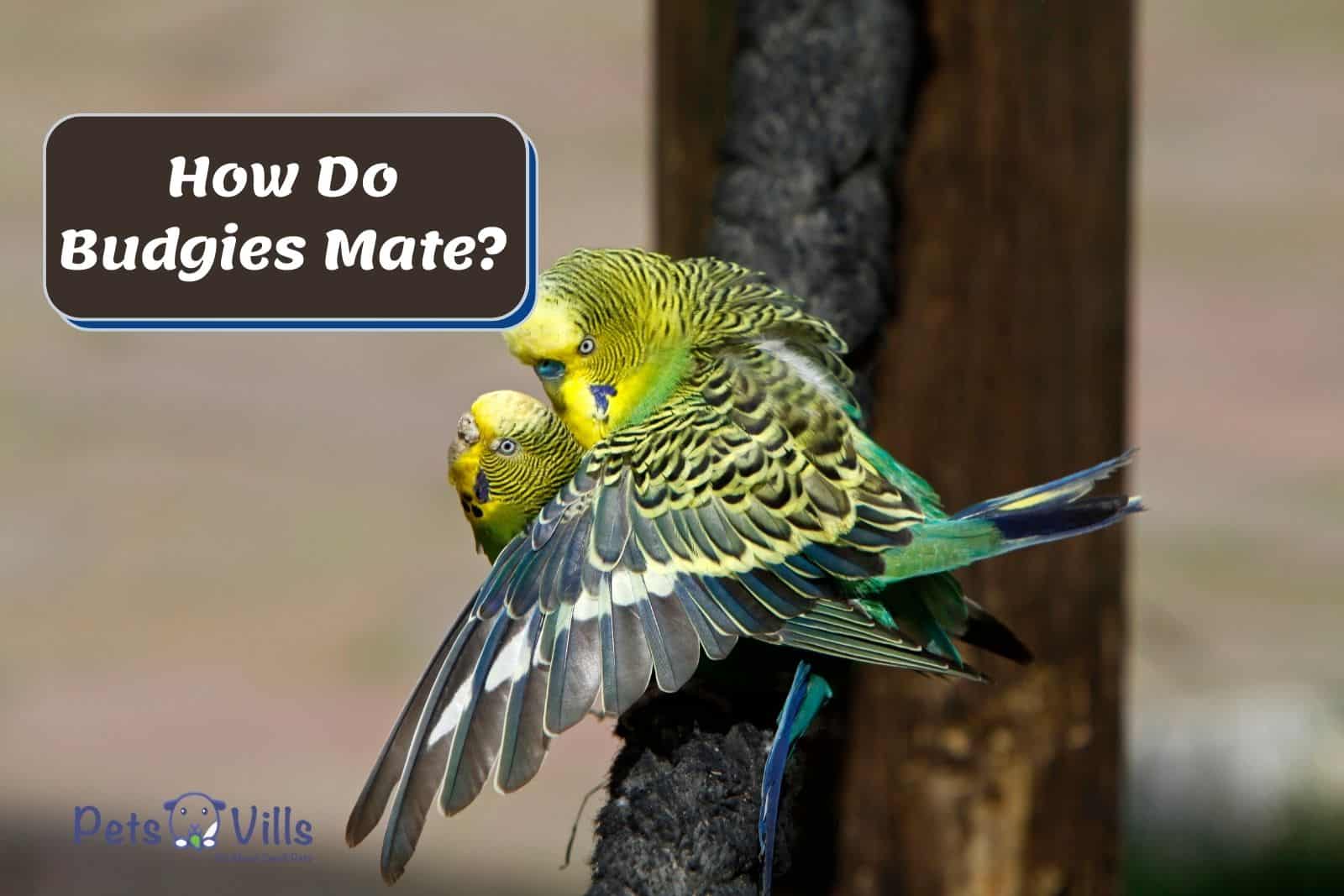Budgie breeding is a hobby that involves raising budgerigars (also known as budgies) for sale. This is a fun activity that requires patience and dedication.
Budgie breeding is a fascinating hobby. This article explains the basics of budgie breeding and gives you some tips on getting started.
Table of Contents
How Do Budgies Mate?
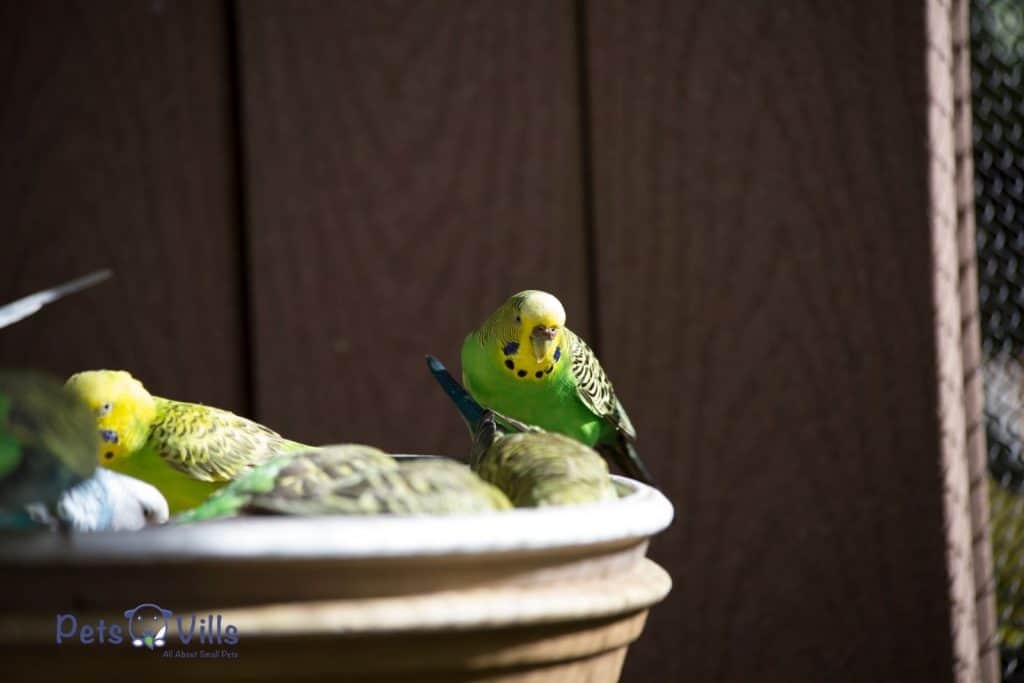
Budgie mating is quite different from most mammals, humans included. Mating is usually only one-way, with male budgies performing co-breeding with female budgies.
Budgies don’t have distinct external reproductive organs like testes or ovaries. Instead, budgies (both male and female) have the cloaca structure [1].
The Cloaca holds two sacs called coprodeum (male) and proctodeum (female). These sacs contain sperm and egg cells, respectively.
The cloaca is located at the base of an animal’s tail, connecting with its lower intestine. To achieve fertilization, sperm cells from both partners unite in the Proctodeum.
READ MORE: What Fruits Can Budgies Eat?
Here’s a funny failed attempt of a budgie trying to mate
@serhan7trains Hormonal male budgie trying to mate😂 #budgiesoftiktok #budgies #budgieslover #budgietiktok #petbirds #birdsoftiktok #budgielife #parakeetsoftiktok ♬ original sound – S
How to Tell if Budgies Are Ready to Mate
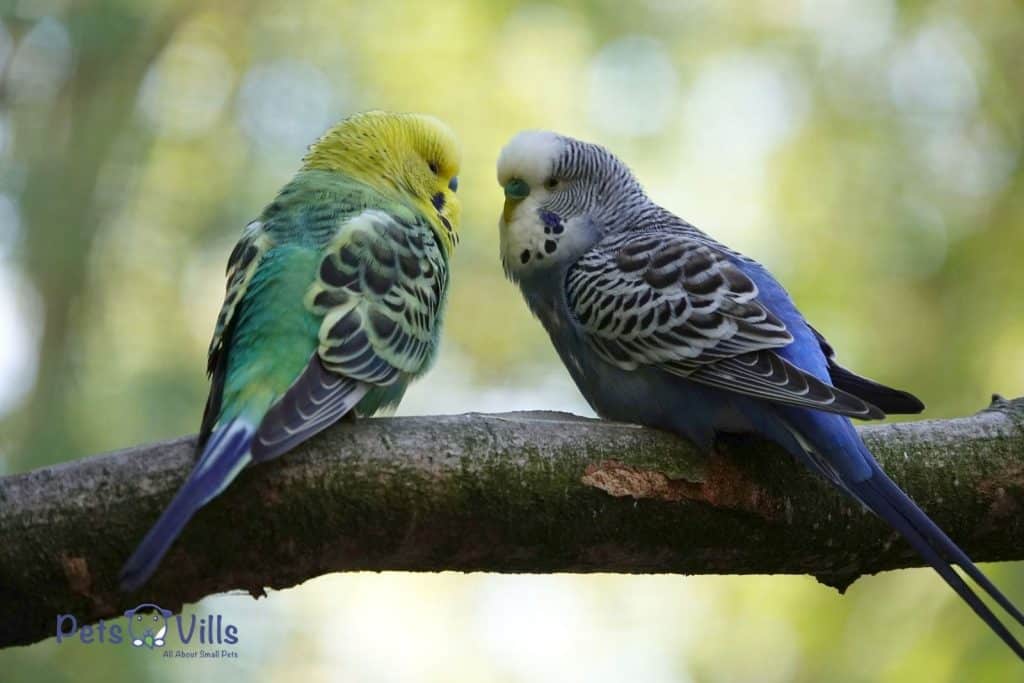
Considering budgies don’t have distinct reproductive parts, mating can sometimes be – let’s say- not the usual.
The male will try to court the female budgie with a lot of head bobbing and feather fluffing. He will also dance to a liquid song. The female budgie watches as she does her mating chirrup.
The male will join the female after she shouts her mating season chirrup. The male taps her beak to stimulate her until she raises her tail and wings in the air.
What Do Budgies Do When Mating?
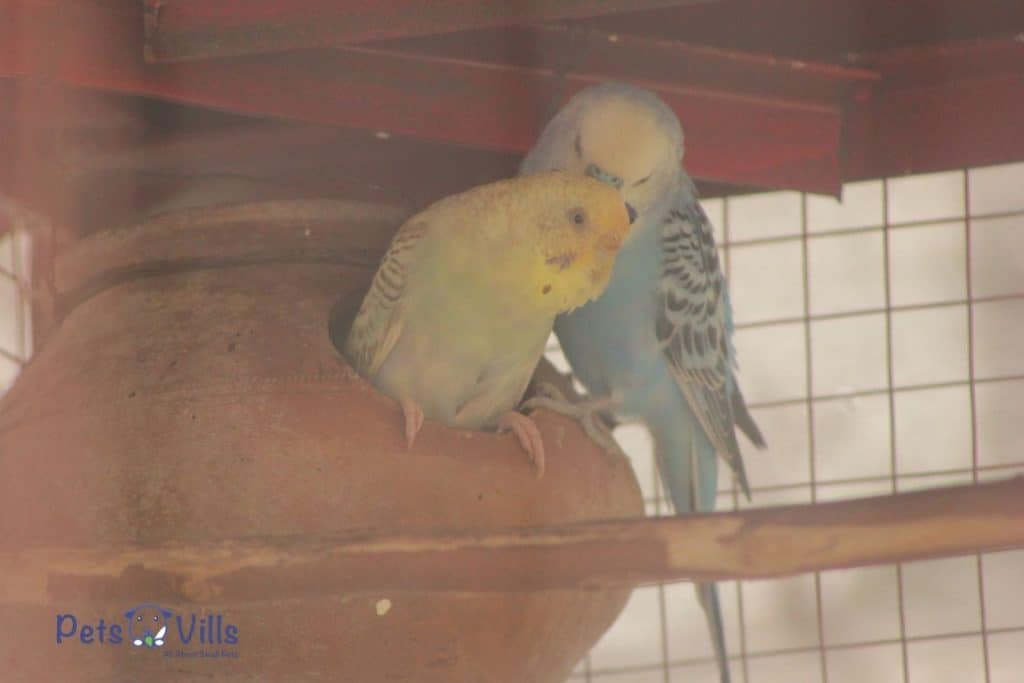
So when a male and a female budgie make their way towards each other, they start rubbing against each other’s cloaca. The male will be the first one to move forward and mount the female.
After ejaculating onto her cloacal region and covering his cloaca with her own, he takes off, leaving his semen inside of the cloaca.
The process is fast but will happen several times in a day.
Now the female has to take care of the fertilization of eggs by waiting until she feels the urge to lay them. Once she lays the eggs, the whole process starts again.
Considering the mating process in budgies, it’s sometimes not usually 10% successful. To increase the chances of successful breeding, budgies mate several times a day.
When budgerigars mate, they transfer some semen into the birds’ vent and finally into the cloacae as the eggs wait for fertilization. Sperms can stay in the cloaca for up to several weeks.
Check out this video of budgie mating.
READ MORE: What Do Budgies Like to Play With?
What Happens After the Mating Period?
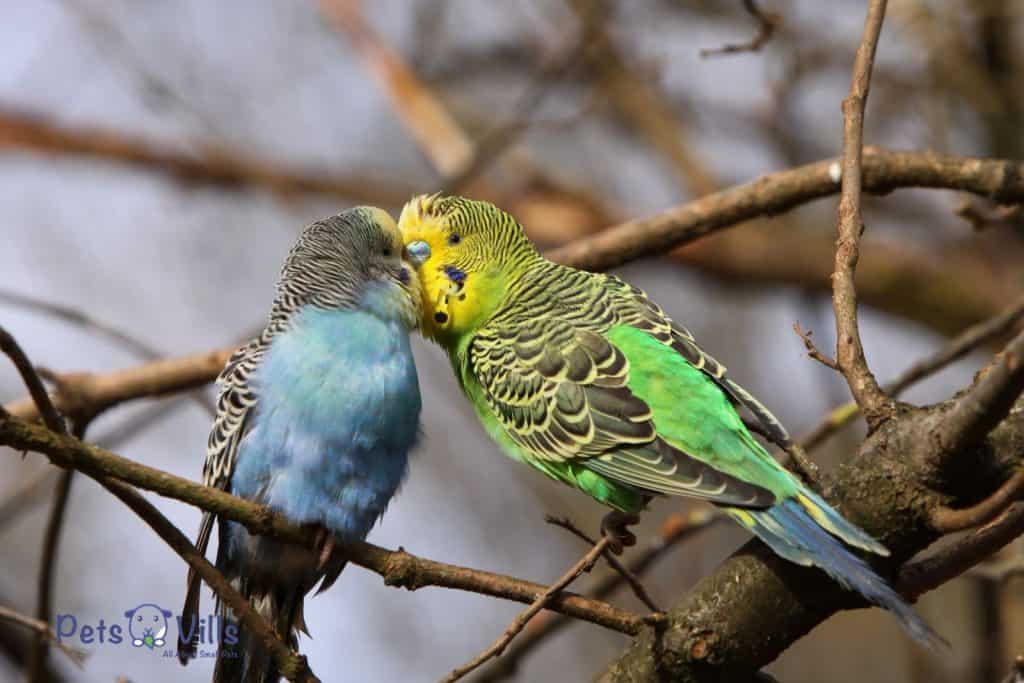
After mating, female budgies spend most of their time in the nest building. They are constantly cleaning themselves and their nests and only leave the nest to poop and eat.
The male budgie will feed the female budgie by regurgitating food at the nest entrance.
This is usually a vital sign that the female budgie is almost laying the eggs.
The female budgies’ abdomen and the vent will also be swollen as the eggs develop. The dropping will have a different hue and be slightly larger than usual.
The female budgie will then lay her egg after a week or two. This will then be followed by fertilization, and the process will repeat itself until the budgies lay all the eggs for the clutch.
How to Know if Budgie Breeding was Successful?
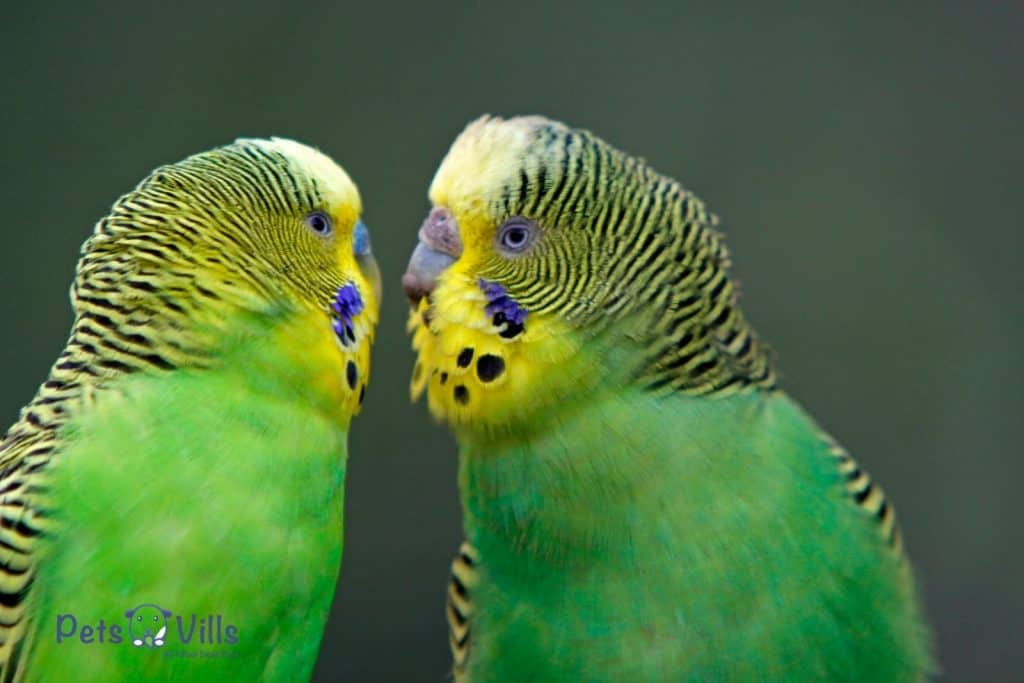
There isn’t a specific reliable technique to check if the breeding has been successful.
The only sure way you can know is when the eggs begin to hatch, at least 1-5 weeks later.
A popular technique used by breeders is called candling [2]. One uses a bright torch on an egg to check if a chick is inside.
Candling requires particular care not to break the egg or cause interference in the nest.
Another sign to know mating was a success, the female will start nesting. She will begin arranging wood chipping, scratching around her nest, and throwing chips out of the nest as if she is spring cleaning.
The breeding budgies will sometimes want to nest somewhere away from the cage. She will most likely want to stay behind the bookshelf or next to the couch.
Budgies that want to hatch will also have heightened aggression. Make sure to check her diet and avoid high protein food.
How Long After Mating Do Budgies Lay Eggs?
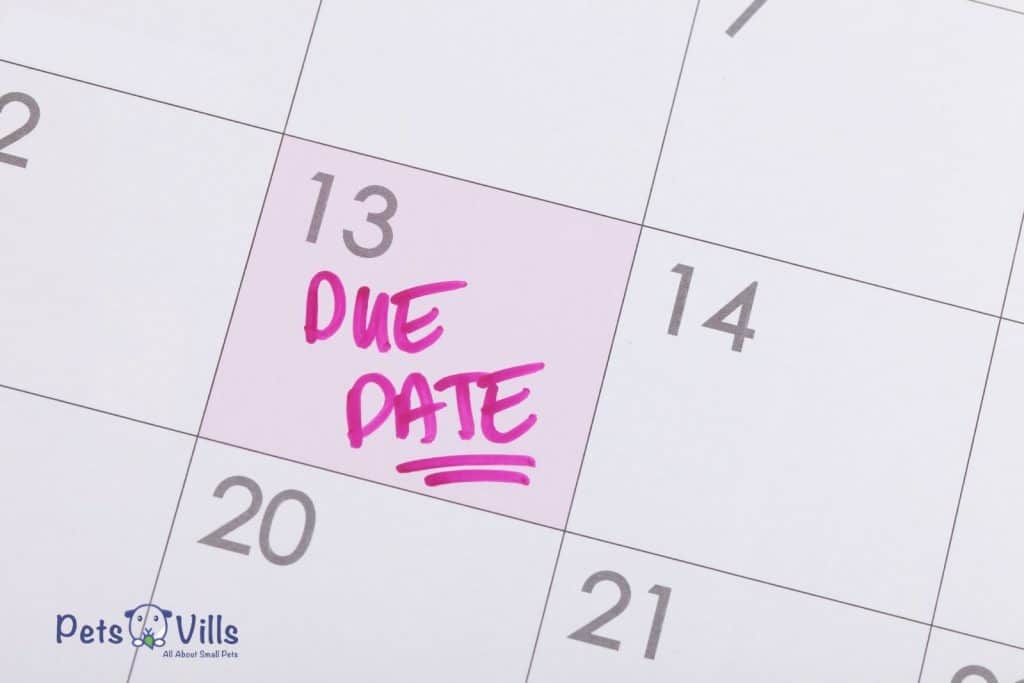
It takes at least ten days before the first egg hatches. After fertilization, the mother budgie lays an egg every other day until all the eggs for that clutch have been laid.
Once all the eggs have been laid, you will rarely see your budgie as she will start sitting on her eggs.
Do not be tempted to check the eggs as the bacteria from your hands can be transferred to the delicate eggshells.
After 18-21 days, hatching will begin, and you will see your first baby budgies.
5 Reasons Why Mating Might Be Unsuccessful

Most budgies will mate successfully at least once in their lifetime. But sometimes mating is unsuccessful, and no chicks will hatch from the eggs.
There are several reasons as to why this may happen:
- Sperms did not move from the male budgie to the female one. This happens with the younger budgies. This could be due to inexperience, wrong positioning, and balancing wrong-sized perches.
- The budgies might have reproductive issues such as low sperm or challenges producing eggs.
- The age of the budgie. Budgies under six months are too young to be sexually developed. The appropriate age for breeding is between 10-12 months.
- Older budgies may become infertile. Females become infertile at four years, while males after six years.
- Some medications can also cause the budgies to be infertile [3].
Do Budgies Need a Nesting Box to Mate
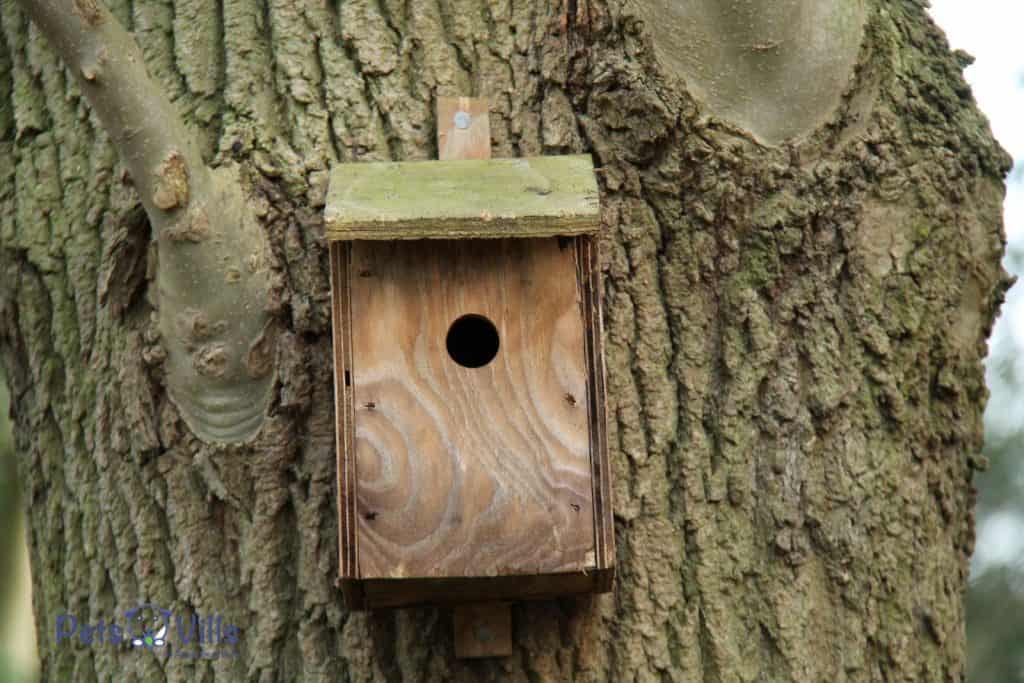
Your budgie needs to live in an aviary with at least one square foot per bird. A larger space means they’ll feel happier and healthier.
You’ll be able to keep them happy if you change their nesting box, so they’re no longer confined to such small spaces.
An excellent way to add some interest to your bird’s life is by adding a nest box to use when they want to lay eggs.
It may require some home improvement projects, such as cutting wires or removing doors, but there’s no reason why you shouldn’t give it a shot.
You don’t need to buy anything special; find something suitable.
Ensure that it has a hinged lid for easy access when checking the eggs and chicks. Many breeders prefer a wooden conclave at the base to stop chicks from having splayed legs.
Ideal Breeding Environment for Your Budgie
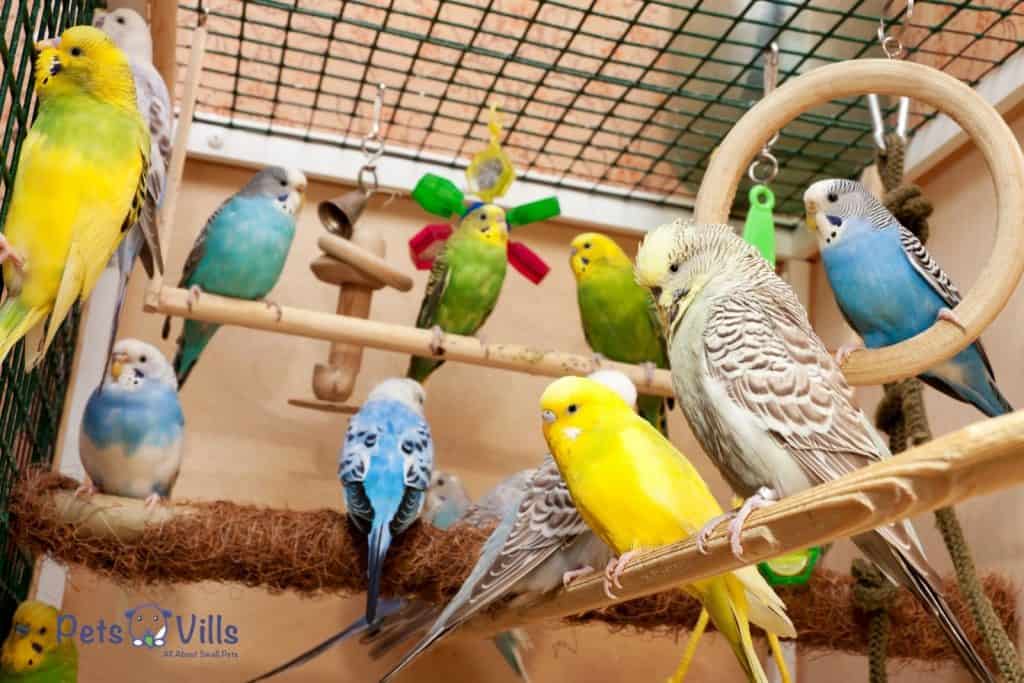
In terms of budgie care, you must ensure that your birds have nesting material like a cuttlefish, a mineral block, and at least two perches.
When the female birds are in the breeding season, make sure to increase the quantity of food and water. Make sure also to add plenty of fresh vegetables and pellets during mating.
Ensure to supply softwood for gnawing to encourage breeding.
Budgies typically breed during the rainy season, so you can increase the chances of breeding by frequently spraying water on them.
FAQS
What are the signs of budgies mating?
Tapping beaks, singing, hanging upside down, and dancing.
How many times in a day do budgies mate before laying eggs?

Budgies mate up to several times a day.
In Conclusion
Budgie mating is pretty simple. You need to study your pair of budgies, make sure the breeding condition is appropriate, and be sure you will have a successful budgie mating.
Remember, at the end of the day, your pet bird is like any other living being – enjoy them, love them and take care of them, for they are a precious and excellent addition to any home!
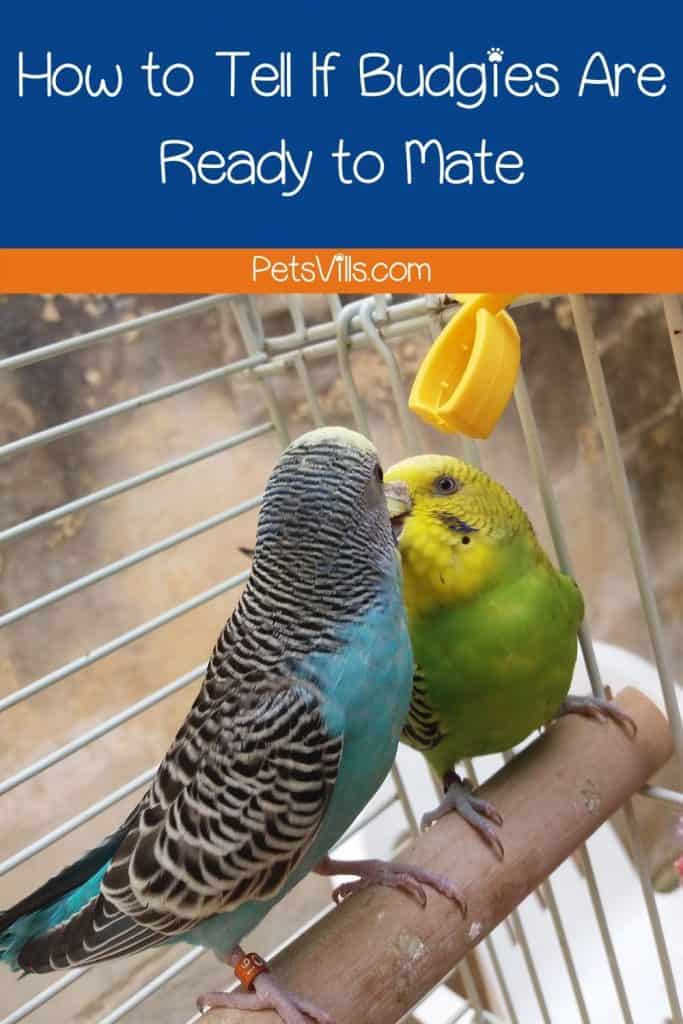
How do budgies mate? Let us know your thoughts on this topic below!
Resources
- 1. Cloaca – an overview | ScienceDirect Topics [Internet]. www.sciencedirect.com. [cited 2022 Jan 24]. Available from: https://www.sciencedirect.com/topics/medicine-and-dentistry/cloaca
- 2. Candling Eggs – Incubation and Embryology – University of Illinois Extension [Internet]. web.extension.illinois.edu. [cited 2022 Jan 24]. Available from: https://web.extension.illinois.edu/eggs/res26-candling.html
- 3. Baker JR. Infertility in exhibition budgerigars. Journal of Small Animal Practice. 1991;32:6–10.
Barry Stingmore is a British content writer living in Fuerteventura, Spain. An animal lover at heart, he shares his home with a dog and four rescue cats and has a passion for writing about animals big and small.
Barry loves finding answers to your animal-related questions, the more research involved the better! You can rely on him to find the facts.
Find him on FACEBOOK, TWITTER AND Linkedin
Read his latest ARTICLES.
Find more about him HERE.

